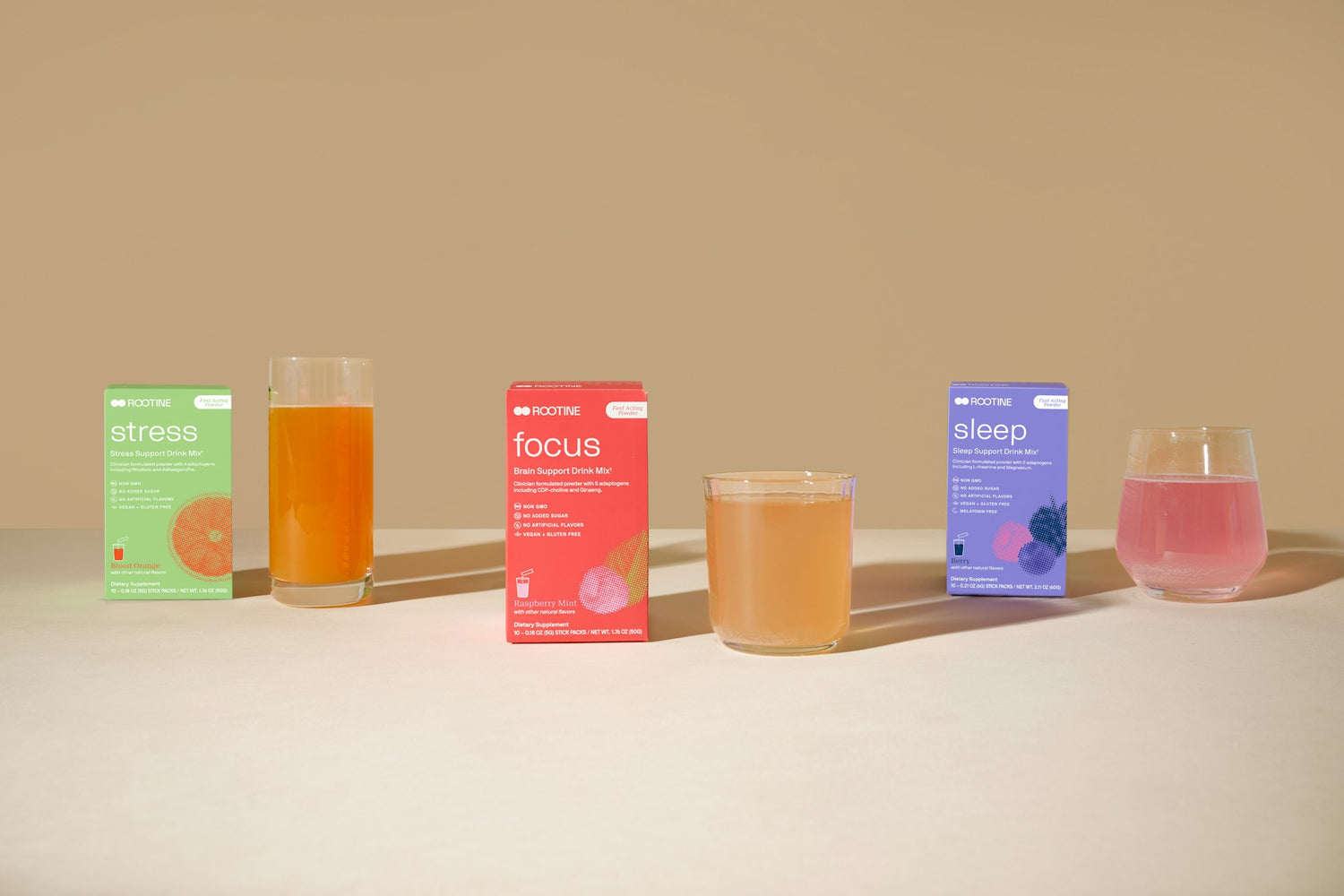Discovered a century ago, Vitamin E is the most well-known antioxidant, meaning it helps fight free radicals in your body - unstable molecules that can lead to heart disease and cancer over time. Free radicals form naturally in your body, but are also introduced by tobacco smoke, UV radiation and pollution (for an easy-to-read explainer on the antioxidants vs. free radicals fight, check out our in-depth post here).
Vitamin E comes in eight forms, but most research focuses on one (called alpha-tocopherol), which is the most prevalent in your body (the liver excretes the other forms).
What are the benefits of taking Vitamin E?
The vitamin’s main benefits, besides being a powerful antioxidant, include maintaining your body’s immune function, and helping prevent blood clots.
Evidence suggests Vitamin E’s largest benefit is its role as an antioxidant. This includes maintaining healthy skin - that’s why you will find Vitamin E in many topical creams! The forms of Vitamin E found in creams may have benefits that Vitamin E obtained through your diet doesn’t have.
Vitamin E can also absorb energy from UV light, which introduces harmful free radicals.
How much Vitamin E do you need?
The amount of Vitamin E your body needs depends on several factors: your lifestyle habits (including diet, weight, stress levels and more), genetic variation, and nutrient levels in the blood.
The Food and Nutrition Board recommends 15mg of Vitamin E for both women and men, pregnant women are also advised to get 15mg per day, and women who are lactating are recommended to take 19mg of Vitamin E. We recommend taking these figures with a grain of salt.
While some excellent sources cite these numbers, few mention these dosages are based on averages - they don’t account for deficiency, your lifestyle, genetics or blood levels. At Rootine, we distance ourselves from averages, instead relying on information about your body to personalize your daily nutrient packets.
What happens if you’re deficient in Vitamin E?
The National Institutes of Health page on Vitamin E warns that people with fat-malabsorption disorders are more at risk of becoming deficient, while people with one rare inherited disorder need as much as 100mg per kilogram of body weight!
The Harvard T.H. Chan School of Public Health mentions several common signs of deficiency: vision impairment, nerve-related pain in the hands or feet, loss of body movement control and weaker immune function.
Certain genetic factors may require you to take varying doses of Vitamin E and other vitamins and minerals. Since Vitamin E is an antioxidant, most people need to maintain a normal level of the nutrient in their body - deviations from these levels is never a good thing. But if you have genetic variations that hinder your body from fighting off free radicals, you’ll need higher doses of antioxidants to protect your cells.
To be clear: this case is not a deficiency. Because of your genes, you require more of the nutrient. “Normal” levels won’t be enough.
Rootine Science
The antioxidant-relevant genes include GPX1, SOD2, GSTM1, GSTP1, GSTT1 and NQO1
As everyone has a unique genetic makeup, Rootine provides an at-home DNA test with your initial order your daily nutrient packets. We analyze for 52 genetic variations, factoring in your lifestyle habits and nutrient levels in your blood to achieve the right balance of vitamins and minerals.
What if you take too much Vitamin E?
Tread with caution when looking up maximum dosages for Vitamin E. Most sources will cite the Food and Nutrition Board’s recommended upper intake level of 1g - but studies have shown that levels lower than 1g can be dangerous as well. The “danger zone” in these studies was very wide, and overdose amounts depended on the individual.
People at risk of negative side effects from taking too much Vitamin E include: those with a Vitamin K deficiency, people with diabetes, and individuals who have liver disease or have bleeding disorders. The Mayo clinic suggests that those about to undergo surgery should stop taking Vitamin E supplements two weeks beforehand, as the nutrient may increase bleeding.
While you want to make sure you’re not deficient, common supplements present a risk, as they contain high levels of Vitamin E. Harvard notes that various meta-analyses (studies that collect and analyze other studies) present contradictory findings on the effects of excessive Vitamin E intake.
Our best suggestion: don’t guess! Rootine assesses your lifestyle and genetic information (via our at-home, easy-to-use DNA kit) to determine proper dosage levels. See out process page to learn more about how Rootine is able to figure out ideal nutrient levels.
What foods have Vitamin E?
Vitamin E is in numerous foods: nuts like almonds and hazelnuts, oils like wheat germ oil (one tablespoon has a little over 20mg of the nutrient) and sunflower oil, and greens like spinach and broccoli.
If you’re eating plenty of nuts, seeds and veggies, you should be getting recommended levels of Vitamin E, but this doesn’t account for lifestyle or genetic variations that may affect your personal dosage requirements.
For reference, here are some common sources of Vitamin E:
-
Almonds: one serving (23 almonds) has 7.3mg.
-
Sunflower oil: one tablespoon has 5.6mg of Vitamin E.
-
Avocado: one avocado has 2.7mg.
-
Rainbow Trout: 85g of trout has around 2.4mg of Vitamin E.
-
Spinach: ½ cup of cooked spinach has 1.9mg.
-
Olive oil: one tablespoon has 1.9mg.
Learn More About Rootine
Rootine is dedicated to providing personalized nutrients that fit your specific lifestyle and genetics. To learn more about the science behind our nutrient microbeads, see The Science Behind Rootine.



